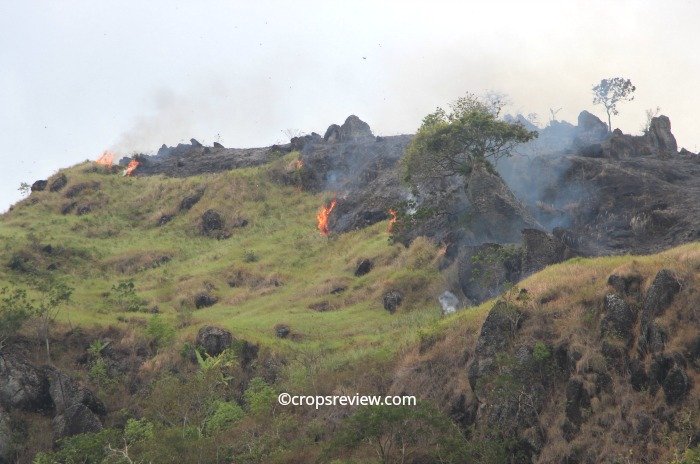Environmental factors are those non-genetic factors that contribute to the characteristics of a plant.
In other words, they are the components of all factors which influence plant growth and development to the exclusion of the genetic factors.
They have been referred to also as external factors to distinguish from the genetic factors which are described as internal.
With the right gene combination, a favorable environment can ensure full expression of crop yielding potential.
Conversely, unfavorable conditions can negate or diminish the full expression of genes.
Despite the use of the descriptive word environmental, however, these plant growth factors should not be interpreted as referring only to the external factors which humans easily perceive.
Although included, they do not refer only to sunlight, temperature, dry or moist air, and other elements of climate.
The environmental factors here referred to comprise the entire external conditions to which a plant or its internal parts are exposed to or interact with, or under which a plant lives and includes physical, chemical, and biological factors.
They are described as “external” because they come from outside of the plant, particularly from outside of the genetic factors.

Divisions of Environmental Factors
The environmental factors are divided into two main groups: biotic and abiotic factors.
The descriptive word biotic means living while abiotic means non-living or dead.
Biotic factors mean all factors or components of the environment that are “biotic” or living.
Therefore, these factors comprise live organisms belonging to any kingdom such as Animalia, Plantae, Fungi, Monera, and Protoctista.
The effects of these organisms on crop growth and yield are varied. Any of these factors can be advantageous or disadvantageous to a crop plant.
By way of example, large animals can kill seedlings by trampling.
A ruminant animal can injure a crop plant and reduce fruit yield by feeding on the foliage or emerging fruit stalks.
Goats have the tendency to nibble and strip the trunks of tree crops of bark. Carabaos tend to rub their sides and horn against the trunk of small trees.
Conversely, there are various ways in which animals can benefit crop plants.
For example, bats serve as pollinator of kapok tree (Ceiba pentandra) and durian (Durio zibethinus).
Their feeding on ripe fruits is also seen as a natural method of pest and diseases control by getting rid of fruits that may harbor insect pests or disease pathogens.
Many animals, including birds, hasten germination as seeds pass through their intestinal tracks.
Additionally, their manures are decomposed and finally converted to hummus and thus contribute to soil making which is necessary to the growth of terrestrial plants.
It is not obvious, but animals play an essential role in the continuing survival of plants and most other organisms.
They expel carbon dioxide (CO2) which plants fix and utilize in photosynthesis, the process which generates the energy that sustains life.
The carbon and oxygen in CO2 are in fact major plant nutrients which are essential in plant growth and development including the production of reproductive and economic organs.
The exact opposite of the biotic factor is the abiotic factor, referring to the non-living components of the environment.
It comprises the topographic, soil (edaphic), and climatic factors.
Further, the specific environmental factors under climatic factors include light, temperature, water or rainfall, relative humidity, air, and wind.
These abiotic environmental factors are addressed in separate pages on this site.
